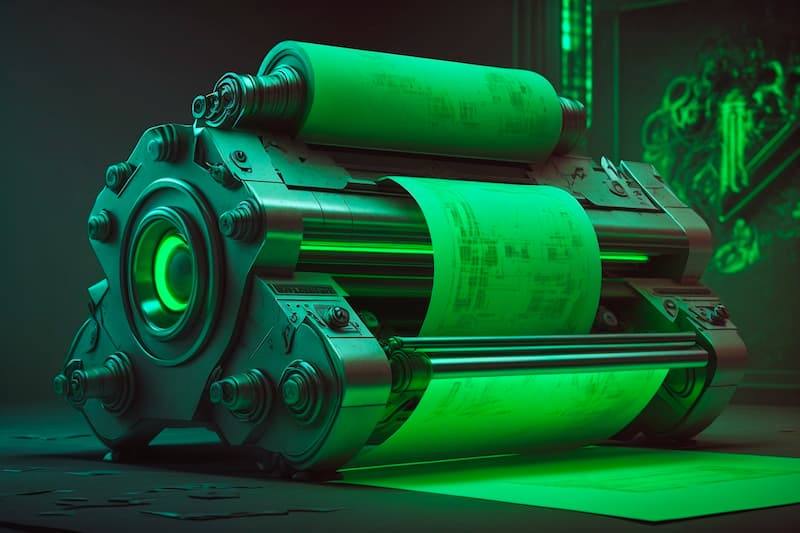The Rise of AI-Generated Content
In recent years, artificial intelligence (AI) has made significant strides in content creation. AI-powered tools like OpenAI’s GPT models have the ability to generate human-like text at an impressive speed, making it easier than ever for writers to produce articles, essays, and even creative pieces. While this technology offers numerous benefits, it also presents challenges, particularly in the area of originality and plagiarism. As AI-generated content becomes more prevalent, it becomes increasingly important to use a plagiarism checker that can detect these passages. Without the right tools, AI-generated content could slip through unnoticed, resulting in unintended plagiarism or compromised originality.
A plagiarism checker that can flag AI-generated passages is a game-changer for content creators, educators, and businesses. These advanced tools are designed to identify text that may have been generated by an AI system rather than a human. By doing so, they help maintain the integrity of written content and prevent the spread of unoriginal or misleading material.
How AI-Generated Content Is Different
AI-generated content may resemble human writing, but it has distinct characteristics that can often be detected by a sophisticated plagiarism checker. For one, AI tools tend to generate text based on patterns learned from massive datasets, which sometimes leads to repetitive phrasing or overly generic content. This type of writing can be a red flag for plagiarism, especially when it comes to academic or professional environments where originality is critical.
AI-generated text often lacks personal insight or nuanced thinking, and it may recycle commonly used phrases or information that’s readily available online. These characteristics can be subtle, but they are still noticeable to advanced plagiarism checkers. As AI continues to improve, however, it becomes increasingly important to have a tool that not only detects traditional plagiarism but also flags these unique AI-generated markers.
The Importance of a Plagiarism Checker for AI-Generated Content
As AI technology becomes more integrated into content creation, ensuring that your work is original has never been more challenging. A plagiarism checker that can flag AI-generated passages adds a new layer of protection for content creators. It goes beyond simply detecting copied content and helps identify material that could be seen as “artificially” generated, thus ensuring that your work meets the highest standards of authenticity.
Many industries—especially academia, journalism, and publishing—require strict guidelines for originality. Using a plagiarism checker capable of flagging AI-generated content can help professionals meet these standards, maintain credibility, and avoid the risks of presenting work that is perceived as less than original. AI-generated content can sometimes blur the lines of what constitutes plagiarism, and a specialized plagiarism checker can ensure that the work being submitted is entirely unique, whether created by a human or machine.
How a Plagiarism Checker Flags AI-Generated Passages
To detect AI-generated content, a plagiarism checker uses advanced algorithms that analyze patterns in writing. These checkers often incorporate deep learning models to recognize text features that are typical of machine-generated content, such as repetitive phrases, unnatural sentence structures, or an over-reliance on certain words and phrases.
AI-generated text often has a certain “machine-like” quality that makes it different from content written by humans. A sophisticated plagiarism checker can flag this by analyzing the text’s syntax, structure, and word choice. Unlike human writers, AI systems don’t produce content with genuine creative insight or personal experience, and these tools are trained to look for such indicators.
Some advanced plagiarism checkers also utilize large-scale datasets of known AI-generated content, comparing new text to these sources to identify similarities. This comparison can help detect AI writing that is too similar to the output of popular AI tools. By continuously learning from new examples of AI-generated text, these plagiarism checkers can stay ahead of the curve in detecting emerging AI writing patterns.
Benefits of Using a Plagiarism Checker That Flags AI-Generated Content
One of the primary benefits of using a plagiarism checker that flags AI-generated passages is the peace of mind it offers. Whether you’re a teacher grading papers, a content marketer ensuring that your blogs are unique, or a business leader overseeing company reports, knowing that your work is free from unoriginal AI-generated passages can help protect your reputation.
These specialized plagiarism checkers also help ensure that AI tools are used ethically. While AI can be an excellent resource for augmenting content creation, it’s important to use it responsibly. A plagiarism checker that flags AI-generated passages ensures that content creators are not passing off machine-generated work as their own. This promotes transparency in content creation and helps uphold the integrity of written materials across various fields.
Additionally, by using a plagiarism checker to detect AI-generated passages, you can improve the overall quality of your work. If an AI tool generates a passage that doesn’t meet your standards, having the ability to detect and rewrite it ensures that your final product is polished and truly original.
The Future of Plagiarism Detection in AI-Driven Content Creation
As AI continues to evolve, so too will the methods used by plagiarism checkers to detect machine-generated content. With the rapid development of more advanced AI tools, it’s essential that plagiarism checkers evolve to meet the growing challenges of content originality.
In the future, AI-powered plagiarism checkers may become even more adept at distinguishing between human and machine-generated text. These tools could analyze not only the text itself but also the metadata, writing style, and other underlying features that contribute to content creation. This will provide a more comprehensive solution for detecting AI-driven plagiarism and ensuring that written work meets the highest standards of authenticity.
Conclusion: Protecting Originality in the Age of AI
In a world where AI is increasingly used to generate content, it’s crucial to have the right tools to ensure that your work remains original and authentic. A plagiarism checker that flags AI-generated passages provides an invaluable service for anyone concerned about content integrity. By using these advanced tools, you can ensure that your work is not only free from traditional plagiarism but also original in an era where AI-generated content is becoming the norm.
Whether you’re an educator, content creator, or professional writer, using a plagiarism checker that detects AI-generated material helps maintain the authenticity of your work. As AI continues to shape the future of content creation, these tools will play an increasingly vital role in protecting the originality and credibility of your content.



